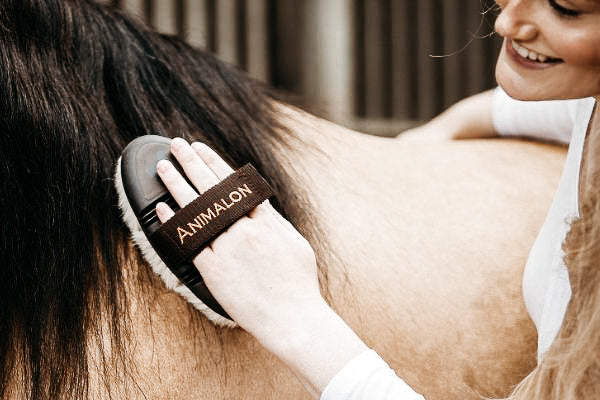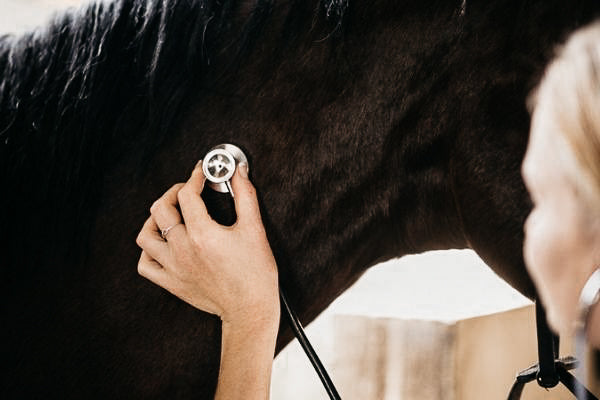
Everything about the saddle
In today's equestrian sports, the saddle plays an enormously important role for horse and rider. The selection of horse saddles is incredibly large - whether dressage saddles or jumping saddles, western saddles or eventing saddles - different types of saddles have been developed for each discipline, which are primarily adapted to the requirements of the respective discipline.
You can find out what types of horse saddles there are, how the saddle is generally constructed and much more about the subject of saddles here.

What types of horse saddles are there?
In the following we will introduce you to the different types of saddles in more detail.
Dressage saddle
The dressage saddle has straight, long saddle leaves that extend downwards. There are deep, semi-deep and normal, also called anatomical, seats. The contact surface of the saddle on the horse's back is rather short and is intended to give the rider a deeper, calmer and more secure seat. This allows the rider to provide assistance more precisely. Dressage saddles can have flexible or fixed blocks to prevent the rider's leg from slipping forwards or backwards and also to enable targeted assistance.
By the way, the beautiful saddle pad in the photo is available here.
Eventing saddle
The versatility saddle lives up to its name in that its structure allows it to be used in a variety of ways. It combines the advantages of a dressage and jumping saddle in one saddle. The eventing saddle can be made with a focus on dressage or jumping and therefore the shape of the saddle flap tends to the corresponding basic shape.
One then speaks of an eventing saddle with a focus on dressage (VSD) or a focus on jumping (VSS).
Racing saddle
A racing saddle is a particularly light and short riding saddle that is used in horse racing. This saddle gives the racehorse a lot of freedom of movement. Of course, the saddle is not particularly comfortable for the rider, but it doesn't need to be, because when racing, the rider goes into the so-called "racing seat" and lifts his buttocks out of the saddle and bends forward.
Jumping saddle
In contrast to the dressage saddle, the jumping saddle has a longer contact surface and is overall much flatter in shape. Due to its rather low seat cushion and its short, round saddle flap, which is often curved slightly forward towards the horse's shoulder, the rider bends his leg more and gets better support on the knee. In this way, the horse's back can be relieved when jumping over an obstacle by having the rider bend his weight forward over the jump and lift his buttocks out of the saddle.
Baroque saddle
The baroque saddle differs from normal English saddles particularly in its seat. The seat is not flat, but slightly curved upwards. This shape has the advantage that it gives the rider more freedom in choosing his pelvic position and the right and left buttocks can provide finer assistance. In addition, the seat is framed by so-called “galleries” and give the rider a feeling of security. Another big difference is that we often find quilted saddle flaps on baroque saddles.
Stock saddle
The Stocksatte is also known as a “traditional saddle”. Essentially it is similar to the western saddle., although he rarely has a so-called “horn”. In contrast to other sports saddles, the stock saddle has softer padding and therefore distributes the rider's weight optimally on the horse's back. The most striking feature of the stock saddle are the so-called “Poleys”. Poleys are the knee supports that keep the rider in the saddle even in dangerous situations and still offer him sufficient freedom of movement.
Western Saddle
What is immediately noticeable about the western saddle is the characteristic horn on the front cantle. The horn with hand purchase is used, for example, to attach the reins. Of course, it also used to be used to attach the lasso? The Western saddle is significantly wider, longer and heavier than the usual English saddles. The wide seat and the long, wide stirrups give the rider a comfortable and secure seat. This makes the western saddle ideal for horseback riding/trail riding.
Trekking saddle
The trekking saddle is often used for trail rides. Due to its large contact surface, it offers the horse's shoulders a relatively large amount of freedom. The long saddles and short saddle flaps are characteristic of the trekking saddle. Various eyelets can be used to optimally attach luggage for trail rides.
How is a classic saddle constructed?
Basically, all saddles for classic riding, i.e. dressage, jumping and eventing, have the same structure. The exception to this is the treeless saddle. The so-called treeless saddle, as the name suggests, has no saddle tree and lies completely on the horse's back. The saddle flaps are very flexible and soft. This allows the rider to feel the horse's movement better.
What should you pay attention to when choosing a saddle?
The most important points for the horse
- The saddle should allow freedom of the spine and not pressurize
- The horse's movement should not be impaired or disturbed
- The rider's weight should be optimally distributed on the horse's back
The most important points for the rider
- Sitting in the horse's saddle should be comfortable and safe for the rider
- Giving help should be more precise and easier
- The length of the saddle flap should be adapted to the rider's leg
- The seat should also be adapted to the rider
What accessories are available for saddles?
- Saddle girth
- special waist belt/rear belt for western saddle
- Stirrups
- Stirrup leathers
- Saddle pads such as b Saddle pads, saddle blankets, gel pads and lambskin pads
- Tail strap
- Saddlebag
- Maria Hilf strap/saddle grip strap
- Saddle protector
If you are currently looking for a new saddle for your horse/pony, please be sure to contact a qualified master saddler. Only an optimally fitting saddle can give you and your horse long-term riding pleasure.

Have fun!
Discover more posts

Nice to welcome you to our website. Here you can find out everything about the popular brushes from Animalon. We are the brush start-up from the Lower Rhine. Our goal is to make daily horse care a ...
Continue reading
Druse in horses – necessary information in an emergency
We all want healthy horses. But unfortunately we keep hearing about news from riding stables where diseases such as strangles have broken out. A big shock for the owners of the anima...
Continue reading

